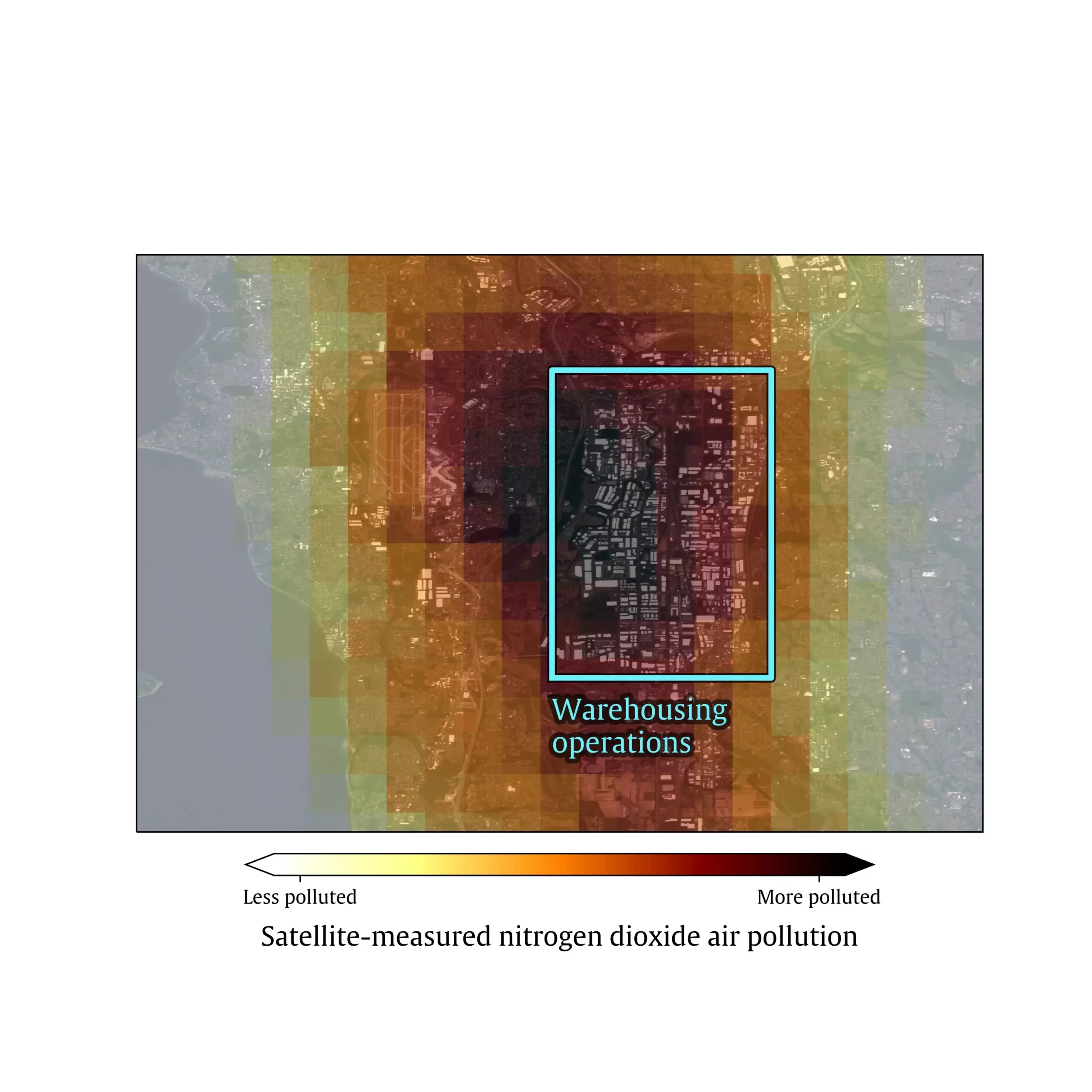The surge in e-commerce demand across America has led to a significant rise in the warehousing industry. However, a groundbreaking study has shed light on the concerning impact of this growth on communities situated near large warehouses. The study, titled “Air pollution impacts from warehousing in the United States uncovered with satellite data,” published in Nature Communications, reveals that residents living in close proximity to these warehouses are facing heightened exposure to a traffic-related air pollutant, specifically nitrogen dioxide. This detrimental pollutant poses health risks such as asthma and other life-threatening conditions.
Lead author of the study, Gaige Kerr, and his team utilized satellite data from the European Space Agency to identify nearly 150,000 large warehouses spread across the United States. The researchers discovered that increased truck traffic associated with these warehouses is a major contributor to elevated levels of nitrogen dioxide emissions. Communities residing downwind from these warehouses are particularly at risk of inhaling these harmful pollutants, with communities of color bearing a disproportionate burden due to their close proximity to dense clusters of warehouses.
The study highlighted several key findings, indicating the severity of the situation:
– A 20% increase in nitrogen dioxide levels was observed in communities located near warehouses.
– Warehouses with higher levels of heavy-duty vehicle activity exhibited even greater nitrogen dioxide levels.
– Racial and ethnic minority populations living near warehouses experienced significantly elevated exposure to nitrogen dioxide and other pollutants.
– Certain counties, including Los Angeles, Harris, Cook, Miami-Dade, and Maricopa, boasted the highest concentration of warehouses.
The COVID-19 pandemic served as a catalyst for the exponential growth of the e-commerce industry, prompting a surge in warehouses dedicated to handling consumer goods. Giants like Amazon significantly ramped up their operations, leading to a substantial increase in the transportation infrastructure required to facilitate the movement of goods. The study underscores the immense impact of this growth on the environment and public health, particularly in communities adjacent to these warehouses.
The study emphasizes the urgent need for regulatory measures to mitigate the adverse effects of warehouse emissions on vulnerable communities. Kerr and his colleagues advocate for the adoption of zero-emission vehicles in logistics operations to reduce pollution levels and safeguard public health. They stress the pivotal roles that industry leaders and utilities play in driving this transition and implementing environmentally sustainable practices within the warehousing sector.
The proliferation of e-commerce warehouses has significant repercussions on air quality and public health, particularly for communities residing in close proximity to these facilities. The study serves as a clarion call for policymakers, industry stakeholders, and regulatory bodies to take decisive action in curbing emissions from warehouses and transitioning towards eco-friendly practices. By prioritizing environmental sustainability and public health, we can ensure that all communities, regardless of race or ethnicity, have access to clean and breathable air.


Leave a Reply